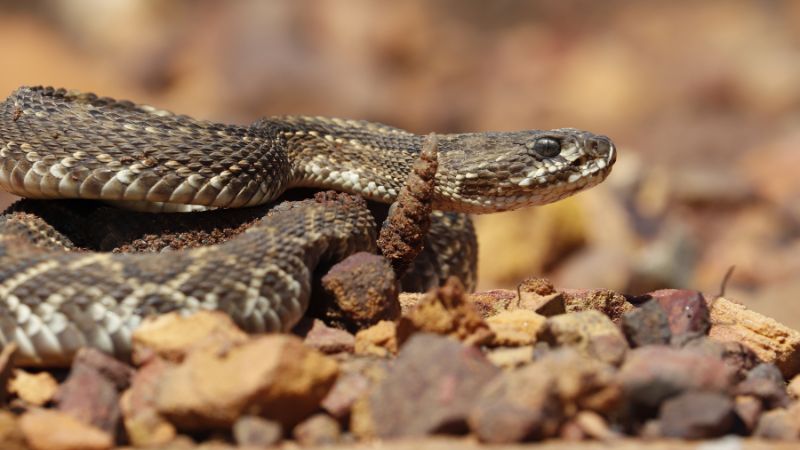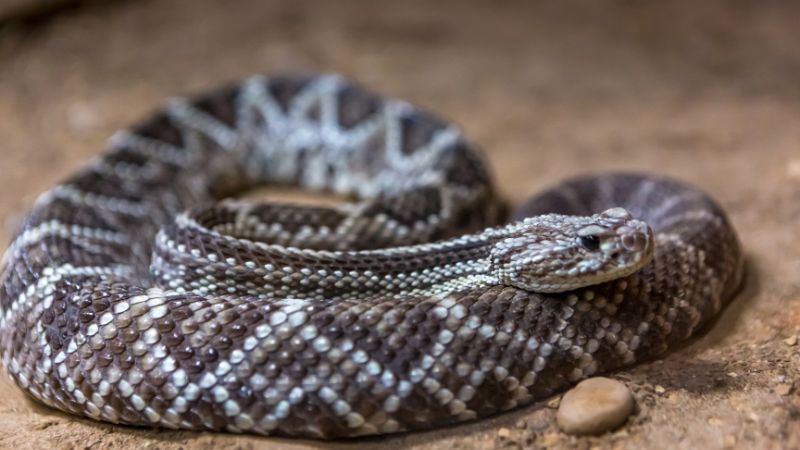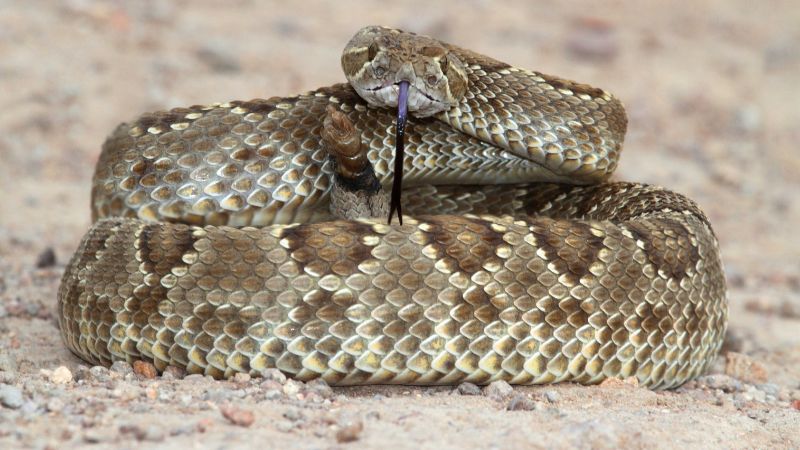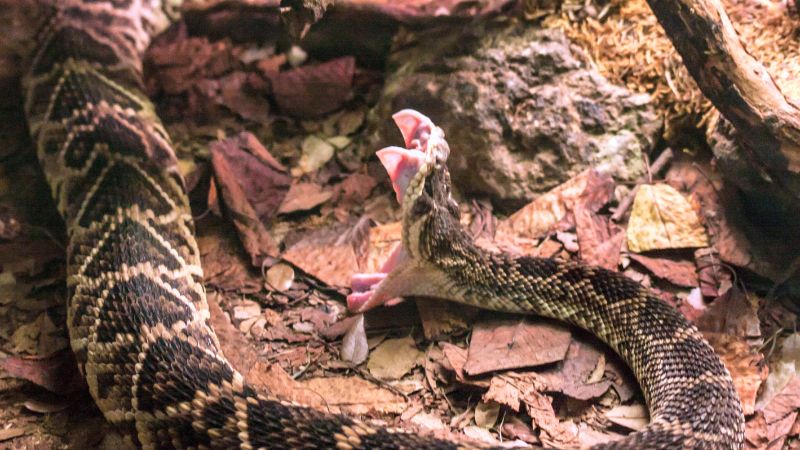Although rattlesnakes don’t normally wander into residential areas, they may still appear, especially if they’re on the lookout for good food and shelter. If the time comes, you should at least be prepared.
So, how to get rid of rattlesnakes? Modify your property by eliminating hiding spots, reduce food sources, seal openings and gaps, install a snake-proof fence, and call professional snake removal services.
This comprehensive guide provides you with everything you need to know about rattlesnakes, how to identify each type, and how to prevent them from ever coming back. Read further for more!
What Are Rattlesnakes?

Rattlesnakes belong in the pit viper subfamily and are among the largest venomous snakes found across the United States. Their rattles are made out of loosely connected scales that they vibrate once they feel threatened.
These thick-bodied snakes are characterized by wide triangular-shaped heads, narrow necks, keeled scales, and elliptical pupils. They come in a variety of colors and patterns depending on the species.
What Do Rattlesnakes Like?
Rattlesnakes are attracted to environments with plenty of areas to hide in. Not only does this provide them shelter, but this also protects them from potential predators and bad environmental conditions.
What Do Rattlesnakes Eat?
Most adult rattlesnakes eat rodents but they also consume lizards, small snakes, and the occasional frogs and insects. They ambush prey, inject their venom, and swallow them whole.
Where Do Rattlesnakes Live?
Rattlesnakes primarily inhabit desert areas but they are also found living in rural and urban areas such as in parks, alongside riverbanks, and even at golf courses. They may also slither around homes and yards.
How Long Does Rattlesnakes Live?
They have a lifespan of 10 to 25 years, depending on intensity of predation and environmental conditions. However, there are some snakes that have been documented to live more than 50 years in the wild.
How Big Will Rattlesnakes Get?
The average length of rattlesnakes is 3 to 5 feet but some species may grow up to a whopping 6 to 8 feet. In fact, the longest snake on record is an Eastern Diamondback Rattlesnake with a size of 8 feet and 4 inches long.
What Is the Behavior of Rattlesnakes?
Generally, rattlesnakes are not aggressive as they tend to avoid direct confrontation as much as possible. However, if they are intentionally provoked or threatened, they may bite.
Rattlesnakes are usually active in the spring and summer. They are sensitive to changes in temperature and like to bask in the sun in the morning. Some species go into brumation during the winter season.
Related: How to Get Rid of Kingsnakes | Easy & Humane!
Different Types of Rattlesnake
Western Diamondback Rattlesnake

This species is responsible for majority of the snakebite incidents in the United States. Its venom is potent as it is hemotoxic, cytotoxic, and myotoxic, resulting in severe envenomation and death if left untreated.
- Scientific Name: Crotalus atrox
- Appearance: Pale blue, yellowish gray, or pinkish ground color. It has dark, diamond-shaped markings with white borders across the length of its body. Its tail is white and ringed with black.
- Lifespan: Up to 20 years
- Habitat: Prefers dry terrain covered with shrubbery and rocks
- Length: 4 to 6 feet
- Place of Origin: Southwestern United States and Mexico
- Characteristics: Aggressive, nocturnal hunters that are also good swimmers and migrate during the fall.
Mojave Rattlesnake

The Mojave rattlesnake has the most potent rattlesnake venom in the entire world due to its hemotoxic and neurotoxic properties. In fact, its venom toxins have their own name: the Mojave toxin.
- Scientific Name: Crotalus scutulatus scutulatus
- Appearance: Shades of gray, brown, or yellow with a greenish tinge. Its diamond-shaped blotches are dark with pale margins with alternating pale and dark rings on the tail.
- Lifespan: 12 to 20 years
- Habitat: Desert flatlands with little vegetation
- Length: 2 to 4 feet
- Place of Origin: Southwestern United States and Central Mexico
- Characteristics: Primarily nocturnal and may become aggressive, especially males during mating season.
Timber Rattlesnake

Also known as the American viper, the Timber rattlesnake has long fangs capable of injecting neurotoxic venom in high yields. In 2008, West Virginia established this species as the official state reptile.
- Scientific Name: Crotalus horridus
- Appearance: Gray overall color with a yellow, orange, pink, black, or brown stripe running across its back. It sometimes has a pinkish hue to its scales. It also has a black tip on its tail.
- Lifespan: 16 to 37 years
- Habitat: Forests, lowland cane thickets, swamps, agricultural fields, and river floodplains.
- Length: 2.5 to 7 feet
- Place of Origin: Eastern United States and Southern Canada
- Characteristics: Solitary creatures except during breeding season. They are amazing climbers despite being primarily terrestrial.
Are Rattlesnakes Venomous?
Yes. Rattlesnake venom is highly potent and can lead to several health issues, most of which can be fatal, without immediate medical attention. Even dead rattlesnakes can inject venom an hour after dying as a reflex action.
How Dangerous Are Rattlesnakes?
Rattlesnakes typically avoid people but once they feel threatened, they bite as a form of defense. There are 1,000 reported rattlesnake bites annually and although these cases aren’t usually fatal, the bites are extremely painful nonetheless.
Related: How to Get Rid of Black Rat Snakes? | Effective, Safe, and Humane Solutions
Why Are Rattlesnakes Attracted to Your House?
Although rattlesnakes don’t normally come in direct contact with people, they may look for suitable shelters and food in residential areas, hence why they may become attracted to your house.
Signs of Rattlesnakes
Watch out for these telltale signs that there are probably rattlesnakes in your vicinity:
- Shed scales
- Fecal droppings
- Hissing or rattling sounds
- Strange noises in interiors
Related: How to Identify Snake Droppings? | Identification and Guide
What Should I Do if There’s a Rattlesnake on My Property?

Do not attempt handling or killing the snake. Keep yourself, children, and pets at a safe distance from it. Usually, rattlesnakes in yards can leave on its own but if it doesn’t, call wildlife control immediately.
How to Get Rid of Rattlesnakes?
Getting rid of these snakes doesn’t involve directly removing the snakes from the property but only deterring them from your property. Here’s how to do it:
1. Modify Your Property
Eliminate potential hiding spots such as tall grass, heavy brush, lumber piles, logs, rotten stumps, and other debris. Mow grass as close to the ground as possible. Fill any burrows found in the yard with soil.
2. Reduce Food Sources
This involves the management and control of rodents in your area to make it look less attractive to rattlesnakes. Remove not only mice and rats but also meadow voles and ground squirrels.
3. Seal Openings and Gaps
Rattlesnakes may seek shelter underneath or inside buildings. Seal all cracks and crevices to prevent the snakes from entering. Check your basements, garages, and crawl spaces for any rattlesnake activity. Additionally, install a pool cover if necessary.
4. Install a Snake-proof Fence
Although this method may be expensive, it’s highly recommended if you have children or pets placing outdoors. Use a heavy-duty, galvanized wire mesh as fencing material and bury it at least 6 inches into the ground.
Periodically remove vegetation and debris away from the fence as the rattlesnakes may use this as leverage to climb over it.
5. Call Professional Snake Removal Services
If none of the methods mentioned above work, it’s time to bring in the professionals. You can also contact local wildlife authorities to alert them of rattlesnake activity in your vicinity.
Related: How to Get Rid of Cottonmouth Snakes? | Effective Techniques and Safety Tips
How to Prevent Rattlesnake From Getting Into Your House?
Keep your area clean and tidy by mowing vegetation when necessary, eliminating debris, and getting rid of rodents. Moreover, installing snake-proof barriers and sealing any potential entry points are also effective at preventing rattlesnakes from entering your property.
Tips to Protect Your Pet From Rattlesnake Bites
When walking your dog outdoors, make sure they are tied to a short leash. Steer clear from any rocky, grassy, or brushy areas. Keep an eye on them every now and then.
List of Sources
Cardwell, M. D., Massey, D. J., Smelski, G., & Wüster, W. (2022). Mohave Rattlesnake (Crotalus scutulatus) Identification Revisited.
Hayes, W. K. (n.d.). Southern California Rattlesnakes.
Ingmarsson, L. (n.d.). Crotalus atrox: Western Diamond-backed Rattlesnake.
National Park Service. (2022). Mojave Green Rattlesnake.
National Pesticide Information Center. (2020). Snakes In and Around the House.
New York State Department of Environmental Conservation. (n.d.). Timber Rattlesnake.
Owen, S. (n.d.). Avoiding Snake Encounters.
Pavithran, S. (2020). Animal Blog : Diamondback Rattlesnake.
San Diego Natural History Museum. (n.d.). San Diego’s Rattlesnakes and What to Do When They’re on Your Property.
U.S. National Park Service. (n.d.). Western Diamondback Rattlesnake: Crotalus atrox.
- How to Get Rid of Turtles | Proven Long-Term Solutions! - August 26, 2023
- How to Get Rid of Kingsnakes | Easy & Humane! - August 26, 2023
- How to Get Rid of Northern Water Snakes | Best Solutions and Preventative Measures! - August 19, 2023
